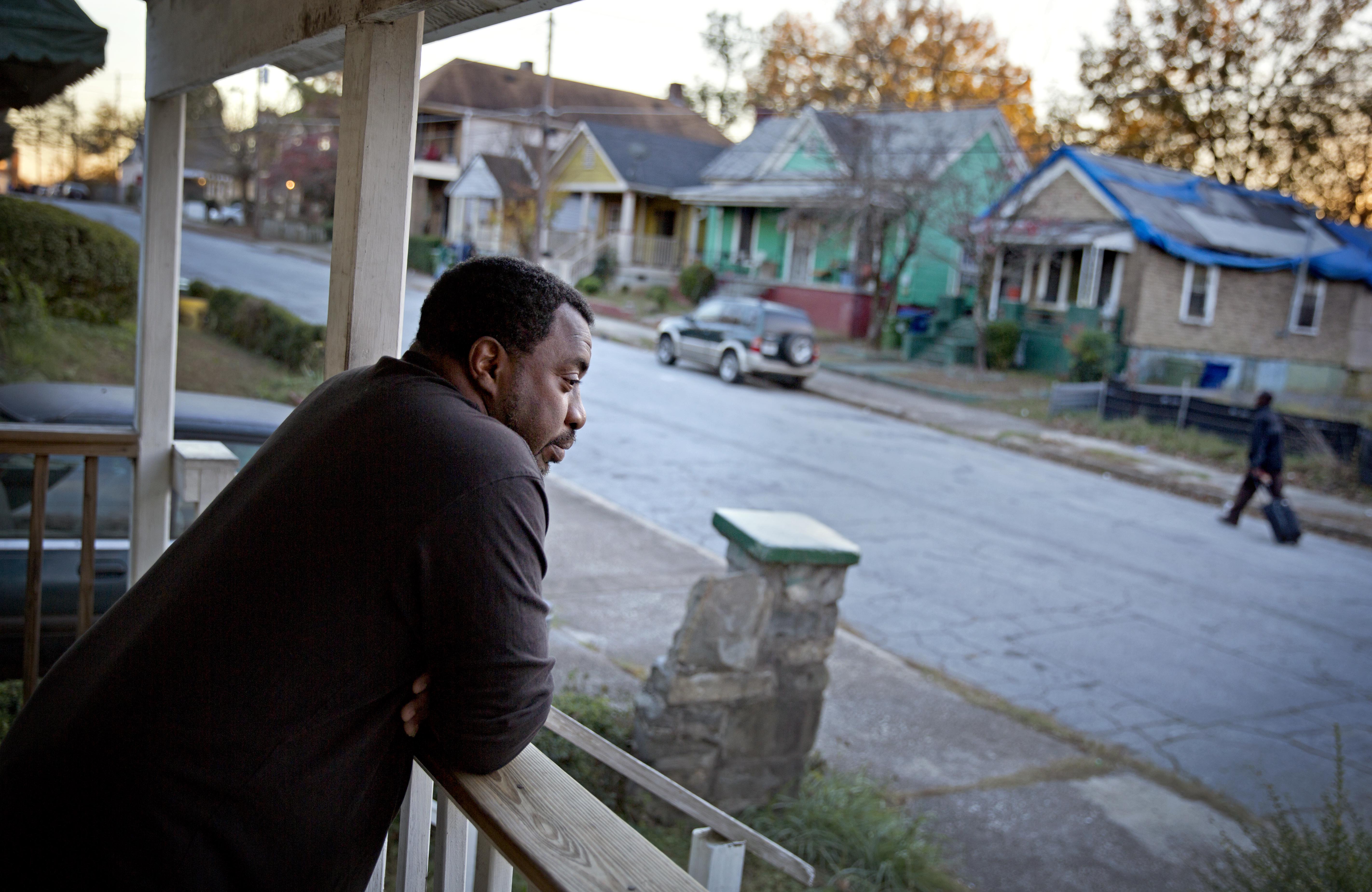
<p>Willie Andrews stands on the front porch of his home in the Mechanicsville neighborhood surrounding the Atlanta Braves stadium, on Wednesday, Nov. 20, 2013, in Atlanta, Ga. The decision to move the Braves to the suburbs highlights long-standing disparities over wealth, where people live, and transportation: all facets of life connected to race and social class in Atlanta. Photo by David Goldman/AP.</p>
Earlier this month, the US Department of Housing and Urban Development (HUD) suspended implementation of its Affirmatively Furthering Fair Housing (AFFH) rule, which requires local governments receiving federal housing and community development funds to look at patterns of segregation within their borders and across their regions.
Suspending the rule threatens to weaken incentives for local governments and their constituents to analyze patterns of segregation comprehensively and at a regional scale, and to come up with concrete strategies to overcome them.
Urban Institute research suggests that HUD should encourage communities to think regionally about segregation and that reducing stubborn patterns of segregation can benefit a region’s economy. Our experience also shows that access to quality data at the local and regional levels can spark important conversations and action to increase access to opportunity for all.
How the AFFH rule encourages data-driven solutions and collaboration
The AFFH rule, which HUD released in 2015 to enforce a key provision of the Fair Housing Act of 1968, requires local governments that receive HUD funding to use data and community engagement to assess segregation and barriers to housing choice for people of color, people with disabilities, and other groups protected under the Fair Housing Act. It also provides local governments the tools and guidance to design bottom-up and evidence-based solutions that create more inclusive communities and improve access to opportunity.
Dozens of local governments began complying with the rule last year by preparing fair housing assessments and identifying goals to reverse segregation. According the recent HUD announcement, local governments would not need to use the tools HUD provides or prepare or submit assessments until HUD resumes enforcement of the rule in late 2020.
One innovative aspect of the AFFH rule is its regional approach. In the rule, HUD created several mechanisms for communities to work together to identify barriers to housing choice and develop regional solutions to combat racial segregation and racially concentrated poverty. The rule allowed local governments to join forces to prepare regional assessments and created a process for doing so. Several jurisdictions in the early rounds of submissions collaborated to prepare regional assessments.
For all communities, HUD provides both regional and local data on racial segregation, demographic trends, the locations of publicly supported housing and other affordable units, and a set of new opportunity indexes. Before the suspension, HUD also required local governments to describe their fair housing challenges within a regional context in their assessments.
In a federalist system of government, where many regions have multiple municipalities in close contact and in competition with each other for people and for jobs, the AFFH planning process helps local stakeholders work together and think regionally.
The regional implications of segregation
Segregation is a regional issue with regional implications, as shown by Urban’s Cost of Segregation project. This work, undertaken by Urban in partnership with Chicago’s Metropolitan Planning Council, analyzed the extent and effects of racial and economic segregation in 100 US metropolitan regions. Although segregation between black people and white people has declined in recent decades, many regions remain highly segregated. Meanwhile, Latino-white segregation has increased.
Our analysis of segregation’s effects found that black people had higher per capita and median household incomes in regions with lower levels of economic segregation, and regions with lower levels of black-white segregation had higher black per capita incomes, higher bachelor’s degree attainment for both black people and white people, and lower homicide rates. We also found that regions with lower levels of Latino-white segregation had higher overall life expectancy.
Our research did not find evidence for segregation providing benefits to specific groups. Simply put, maintaining the status quo in segregated regions harms many and helps few.
Although the Cost of Segregation study did not analyze the mechanisms through which segregation could affect regional outcomes, there are many pathways that play out at a regional scale, such as differential access to jobs and high-quality educational opportunities or to other public services like health care or transportation.
Urban and the Metropolitan Planning Council have continued working together in Chicago, using this research to inform conversations about how policies could shape the region’s future. In April, we will release the results of the second phase of this work, including a projection of the future of segregation in the Chicago region and a comprehensive portfolio of replicable strategies that local, regional, state, and federal stakeholders can use to increase equity and inclusion.
Confronting segregation has benefits for entire regions and is not a zero-sum game where some people gain and some people lose. We should encourage any opportunity for local actors to work together and think regionally. The AFFH rule provides an opportunity and a framework for this type of collaboration.
Let’s build a future where everyone, everywhere has the opportunity and power to thrive
Urban is more determined than ever to partner with changemakers to unlock opportunities that give people across the country a fair shot at reaching their fullest potential. Invest in Urban to power this type of work.